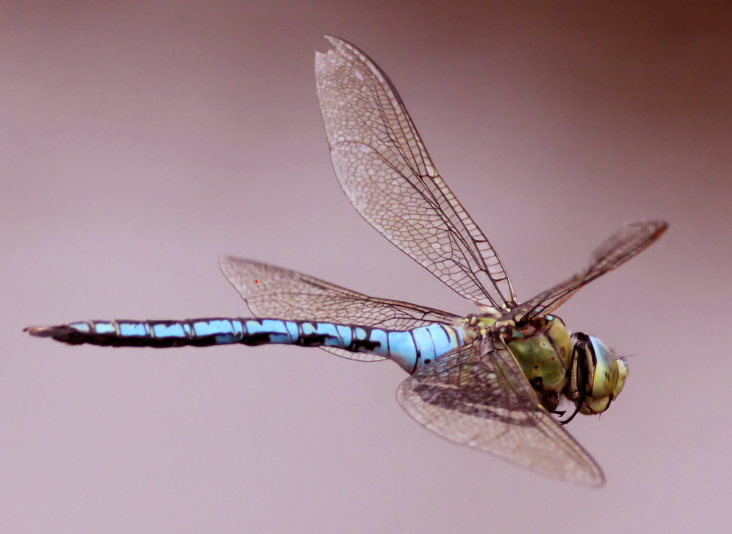325 million years ago, when the British Isles was covered in dense tropical forests, giant insects reigned. Some had a wingspan of three quarters of a meter, huge eyes, rapid flight and a voracious appetite.
Now, at the height of summer, their descendants can be seen darting to and fro above the ponds, streams and fields in the Mid Arun Valley, hunting and defending territories. And when the sunlight catches them they are absolutely stunning. They are the dragonflies and damselflies – of which we have (so far) found 17 species in this area – over half of the total resident in the UK.
Dragonflies, beautiful as they may be, are designed to kill. And only the most successful killing machines inhabit the earth for endless time without being usurped by a better, more efficient model.
Although smaller than their ancient ancestors, the basic design remains unchanged. The enormous eyes cover most of the head and can spot movement up to 15 m away - so important is this acute vision that more than 80% of the brain is devoted to analysing the information. Flight is rapid - up to 25 mph in some species – which, coupled with a jaw that extends forwards from underneath the head in a fraction of a second, makes easy pickings of bees, gnats and other prey. And during the winter when the cold air is devoid of insects to feed upon, the dragonflies are wholly aquatic.
In fact, the majority of the life span is spent in this aquatic form feeding and growing in streams or ponds, hunting water-beetles, tadpoles and even small fish – up to 5 years in some cases. When big enough, the nymph climbs up a rush or some other convenient piece of emergent vegetation. There, it splits out of its skin and pumps fluid into the veins in its wings, ready to take flight.
 Now is the height of their brief flight period – a few short weeks during which they must mate and lay eggs in watery places before they die. In the fields you are likely to catch a glimpse of our biggest native species darting to and fro hunting.
Now is the height of their brief flight period – a few short weeks during which they must mate and lay eggs in watery places before they die. In the fields you are likely to catch a glimpse of our biggest native species darting to and fro hunting.
This is the majestic Emperor Dragonfly, sporting an apple green thorax and a bright blue abdomen with a wingspan of 10.5 cm.
And if you do spot him, just think of its ancestors inhabiting the earth eons ago - 100 million years before even the first dinosaurs appeared. And secretly marvel at this winning design.
